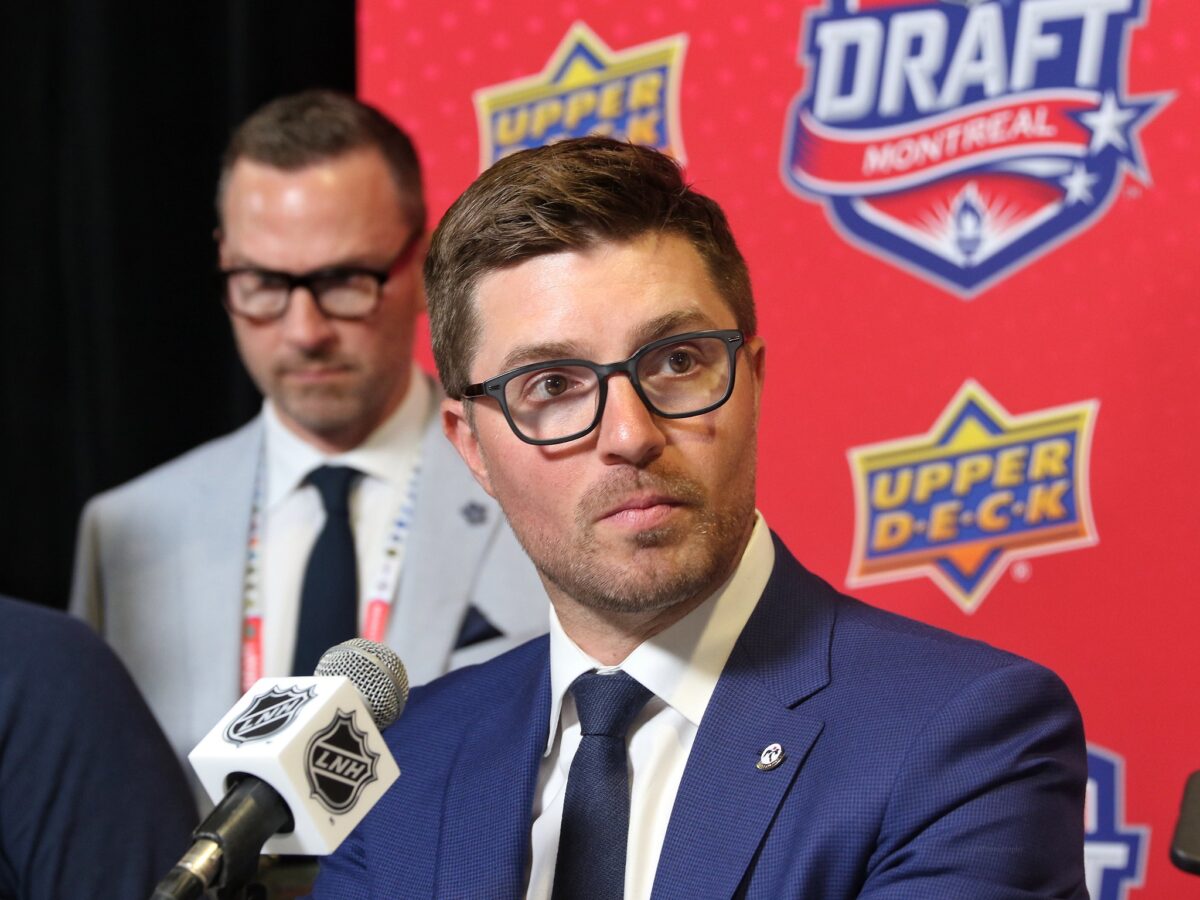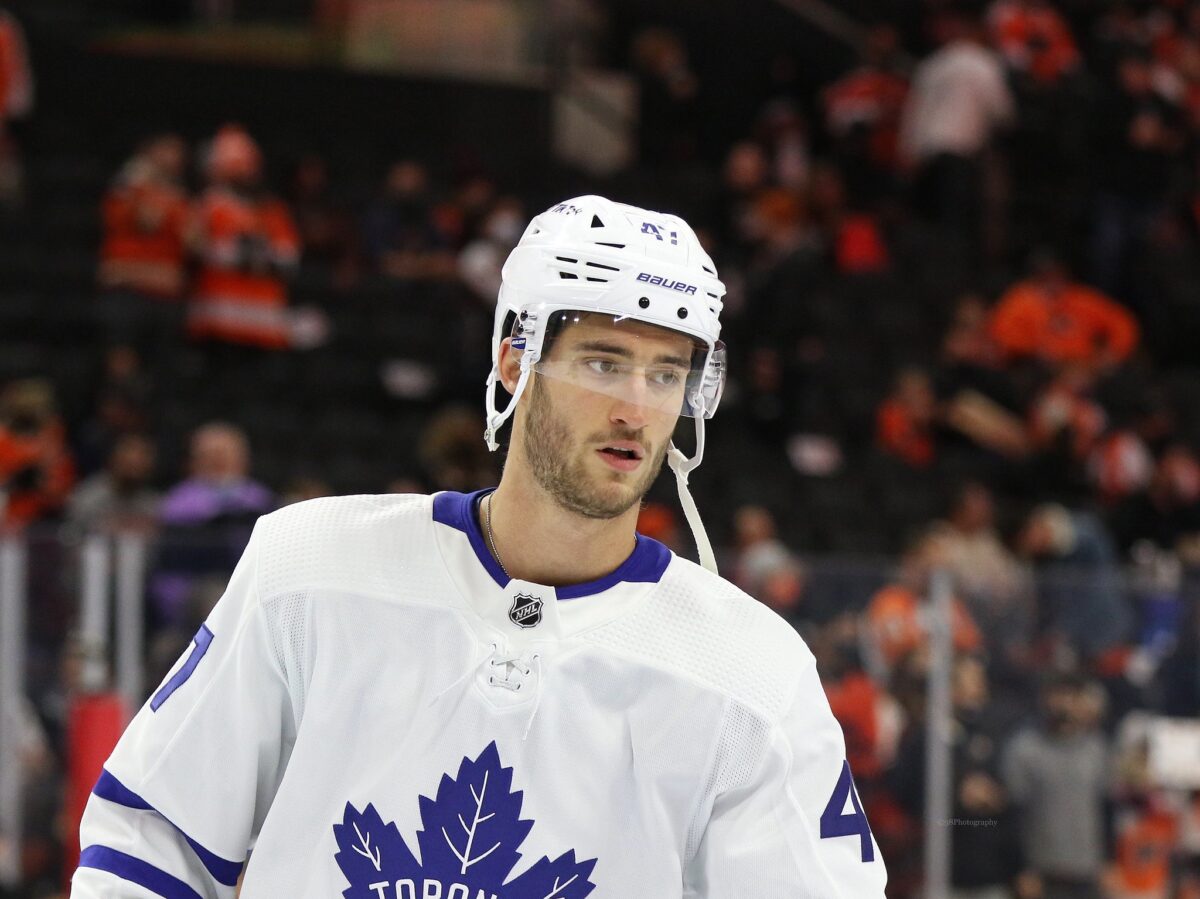At the end of the 2021-2022 season, there were four areas of need we believed the Toronto Maple Leafs needed to address.
First and foremost was the goaltending. Like it or not, the Maple Leafs addressed that need by trading for Matt Murray and then signing Ilya Samsonov as a UFA.
Related: Maple Leafs’ Defence Could Look Vastly Different Next Season
Another need was the bottom six, more specifically the fourth line and then finding a replacement for Ilya Mikheyev. The team signed Nicolas Aube-Kubel and Adam Gaudette, and then reacquired Denis Malgin in an effort to address the fourth-line issues.
It appears the team is putting their hopes on Calle Jarnkrok to replace Mikheyev. While Jarnkrok does not have the size or the offensive upside Mikheyev has shown, he’s an excellent defensive player who should fit in well with Kampf and Engvall on the third line.
Two Areas of Need Remain for the Maple Leafs
That leaves two areas that need to be addressed. First, the team needs a top-four, right-side defenseman. Second, the team needs a second-line, left-winger.
Other than the goaltending situation, the rest of what Maple Leafs’ general manager Kyle Dubas has done seems more like nibbling around the edges than getting to the core of the team’s needs.

Unfortunately, replacing their goaltending tandem and addressing the third and fourth-line needs has exhausted whatever salary-cap space the Maple Leafs had. Depending on who they want to name to their regular-season roster, the team is now either just under the $82.5 million salary cap or just over it.
To address the second-line, left-wing position or the right-side, second-pair defenseman, the team will likely have to make significant trades. The Maple Leafs also have RFAs (restricted free agents) Pierre Engvall and Rasmus Sandin to re-sign.
Related: Where Are They Now? The Jonathan Cheechoo Edition
Again, these moves will require significant salary-cap exorcism. Anything the team does from this point on must be done by balancing in and out movements almost dollar for dollar.
With Trades in Mind, Who Will Likely Leave the Team?
With that in mind, who are the likely suspects to go? Two players who are often mentioned are center/winger Alex Kerfoot and right-side defenseman Justin Holl. Dealing both of them would clear up an additional $5.5 million in cap space.
If these moves are made, re-signing Engvall and Sandin would likely cost the team somewhere between $3 million and $3.5 million. That would create about $1.5 million to $2 million in added space. However, doing the math, that amount would be hardly enough to money to fit in a top-four defenseman and a top-six winger. More salary-cap space would be needed to adequately fill those roles.

Who else would the Maple Leafs find expendable? Looking at forwards, the only two who could open a good chunk of salary-cap space would be William Nylander or John Tavares. We can’t see Dubas even attempting to convince Johnny Toronto to waive his no-trade clause.
That would leave Nylander and his close to a $7 million cap hit. The big problem with that move is that Nylander would take a big chunk of the Maple Leafs’ offense with him, which would ironically weaken the second line by engaging in the very effort to bring in a player who could strengthen it.
Jake Muzzin Seems the Only Player Who Could Create the Space
That leaves one other player whose movement could address both the left-winger and the right-side defenseman needs. The player we keep circling back to is Jake Muzzin. He’s the one piece the Maple Leafs could move as the tipping point to address their remaining needs.
Related: Canadiens Strike Gold With Hiring of Marie-Philip Poulin
Adding Muzzin’s $5.6 cap space to whatever’s left after exchanging Kerfoot and Holl’s salary-cap space for Engvall and Sandin’s would give the Maple Leafs about $7 million in salary-cap space to fill both roster spots.
Removing Muzzin from the left side of the defensive roster would also allow Giordano to move up and Sandin to assume a full-time role.

The problem with this plan is convincing Muzzin to go along with it. He presently has a full No Trade Clause that turns into a Modified No Trade Clause in 2023. He would have to agree to any move that would be made and any team he’d go to in a trade.
A No Trade Clause Doesn’t Mean a Trade Isn’t Coming
As we’ve witnessed in the past and more recently with Ryan McDonagh, a player having an NTC does not mean he won’t be traded. It can be done.
Related: Maple Leafs Will Need Some Defensive Load Management Next Season
Dubas insists publicly that he has plenty of flexibility with his salary cap. From this point on, the flexibility he’s talking about must come through trades.
It is not a matter of if a trade is coming, but when it will come and who will be moved.
[Note: I want to thank long-time Maple Leafs’ fan Stan Smith for collaborating with me on this post. Stan’s Facebook profile can be found here.]
